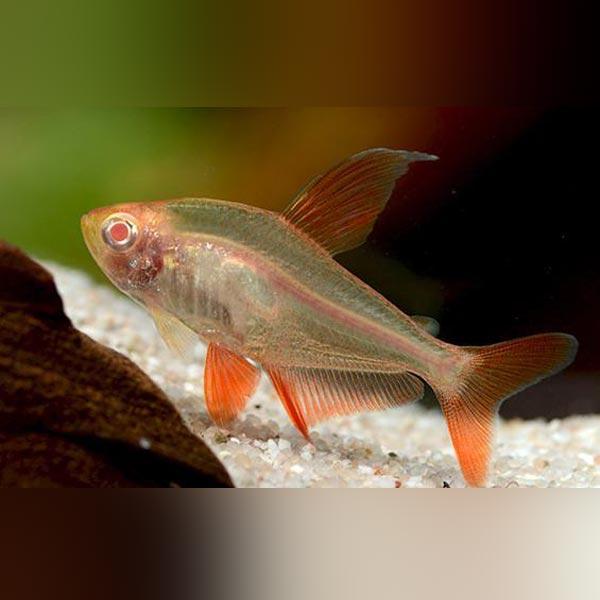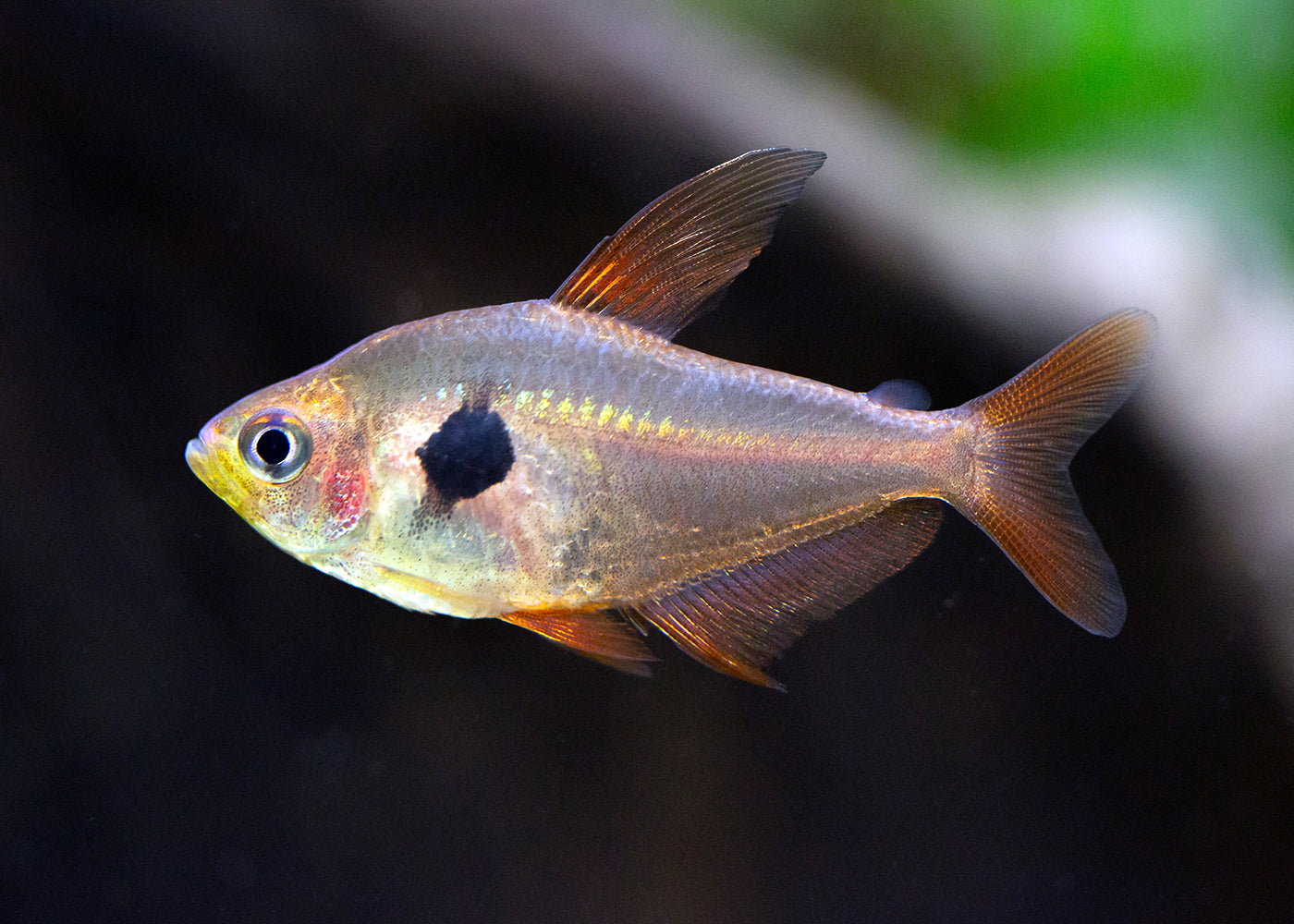

They are an alluring and quiet individual from the tetra family, and their level oval body is shimmering dim with an unmistakable sprinkle of dark edged in white simply behind the gills. Red Phantom Tetras make a great addition to your aquarium when matched with their red-shaded cousins, for example, the Red Phantom, Jewel, or Serpae tetras. It is ordinary for males to guarantee little domains and squabble with different males over their territory in any case, the fights are minor without damage. Red Phantom Tetras are likewise good with other serene community fish. They additionally do well with different tetras. Vivid red body color and a black blotch behind the gills and on top of the dorsal fin distinguishes this diminutive species from others. they are best kept in schools of at least six or more. Red Phantom Tetra, Hyphessobrycon sweglesi (previously referred to as Megalamphodus sweglesi), is a very popular and small tetra introduced into the hobby in the early 1960s. In the wild, they eat bugs, worms, and shellfish.Īlthough they will live in a smaller tank, Red Phantom Tetras do best in around 50 litre or larger tanks. Black Phantom Tetras are a schooling fish, and they live in gatherings. In different zones, nonetheless, they lean toward moderate moving, dinky water that is thick with vegetation. In certain territories, for example, Guapore (Brazil) and Paraguay, they can be found in clear waters that stream into the wetlands of Pantanal. Scientific Name : Hyphessobrycon sweglesi. They work well in large groups, as they will be shy if kept with fewer than 6 individuals. Males have slightly longer fins than females. They have red bodies and fins with a black spot in the middle of their sides.

Ideal Number to Keep – Try to buy a group of at least 8-10 specimens since this species forms temporary dominance hierarchies within which males compete for female attention, and therefore displays more interesting behavior and better coloration when maintained in numbers.įeeding – In aquaria a diet of dried foods but like most fishes does best when offered a varied menu which in this case should also contain live and frozen chironomid larvae (bloodworm), mosquito larvae, Daphnia, Moina, etc.The Red Phantom Tetra comes from South America in upper Paraguay and in regions of Brazil including the Guaporé River bowl and Rio San Francisco. Remarks: Red Phantom Tetras ( Hyphessobrycon sweglesi) are a small tetra from the Amazon. It is perhaps best-maintained alongside similarly-sized characids, gasteropelecids, lebiasinids, smaller callichthyid or loricariid catfishes, and non-predatory, small-to-medium-sized cichlids. Tanks Mates and Compatibility – Very peaceful making it an ideal resident of the well-researched community aquarium. Species – Red Phantom Tetra – Megalamphodus Sweglesi They are easy to keep and fairly hardy to a variety of different water parameters

Just like other tetras, they like to live in a shoal of 6 or more. The Phantom is generally peaceful although the males may fight with each other during breeding time. However, it will accept frozen or freeze-dried brine shrimp, daphnia, bloodworms tubifex, as well as micro pellet food and high-quality flake foods. The natural diet of the Red Phantom Tetra consists primarily of small insects and planktonic animals. Similar to other tetra species, the male Red Phantom Tetra will have a longer more pronounced dorsal fin than the plumper female. The ideal aquarium setup for the Red Phantom Tetra should include a variety of live plants, rocks and driftwood to recreate natural habitat and provide hiding spaces. In the wild, these eye-catching tetras are found in the tributaries and rivers of Columbia, South America. The Red Phantom Tetra is a member of the Characidae Family that is often confused with the similar Serpae Tetra. The schooling nature of the Red Phantom Tetra creates an impressive display when kept in a school of at least six or more individuals. The striking color pattern of the semi-transparent red body is accented with darker red markings in the fins. Males develop long fins, and the females. The red Phantom Tetra is a colorful addition to any freshwater community aquarium. The Red Phantom Tetra is similar in shape and temperament to the Black Phantom Tetra, but is predominantly red.


 0 kommentar(er)
0 kommentar(er)
